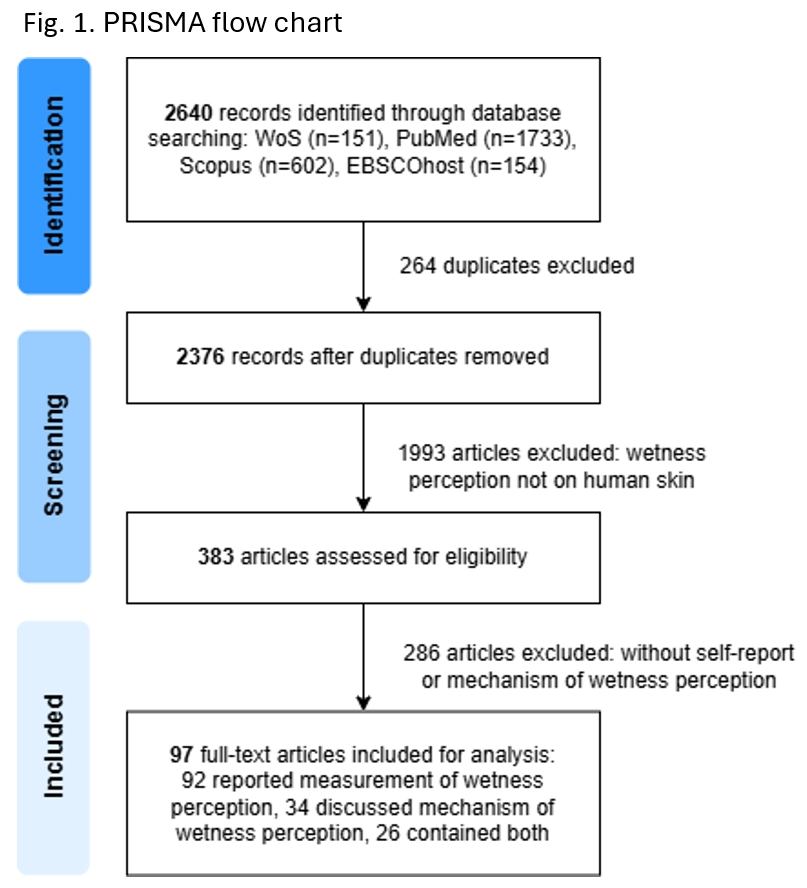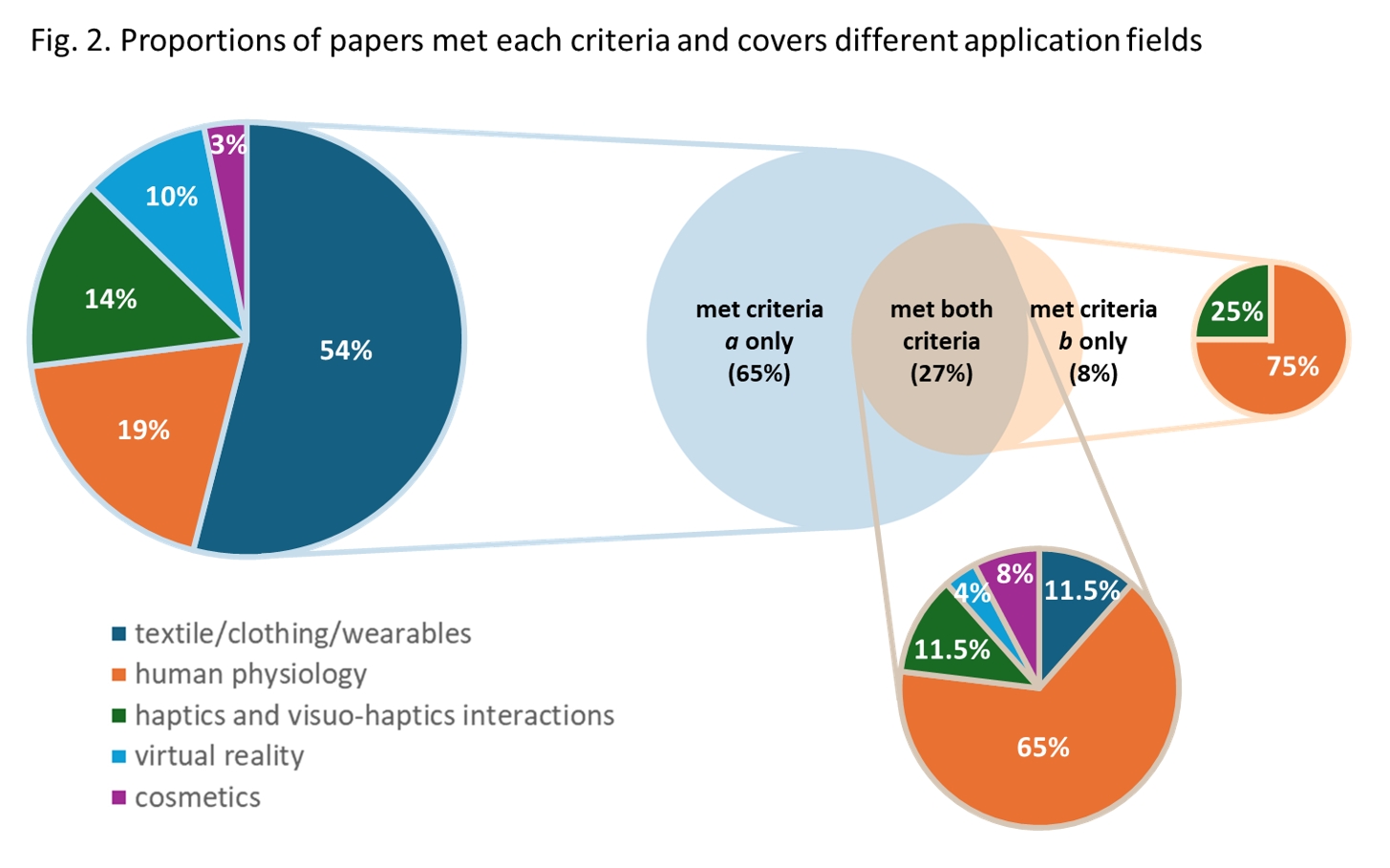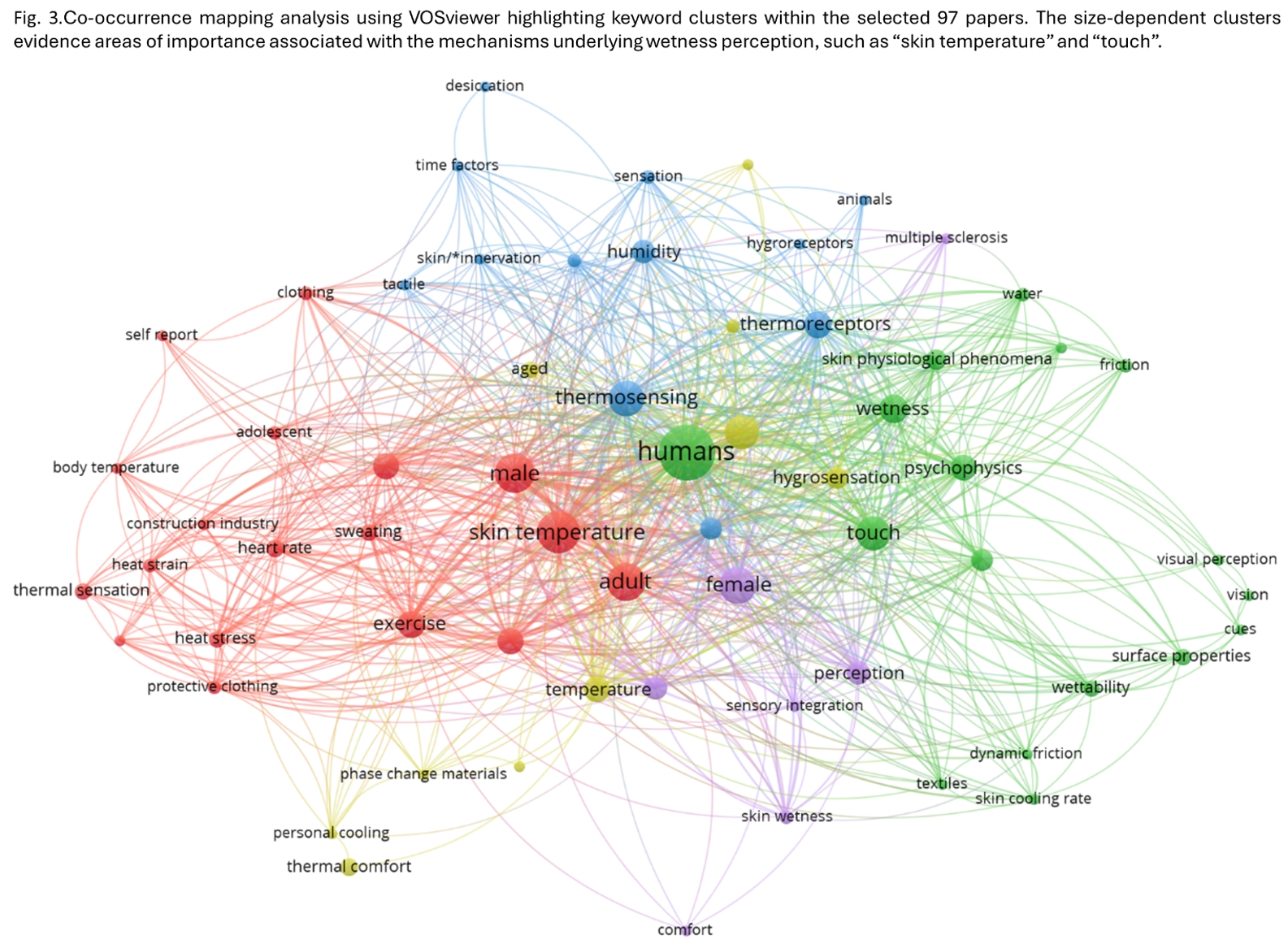Introduction
Perceiving wetness on the skin because of sweating, or during contact with fluids, wet solids or moist air, is a common experience that plays a key role in skin health, comfort, and performance [1][2] . A greater understanding of the sensorial mechanisms underlying wetness perception is sought in textile engineering, built environment, cosmetics, medical device innovation, and virtual reality [3]. However, experimental and methodological approaches to study wetness perception, and the associated theoretical models, may vary greatly across fields of application. Hence, this paper aimed to undertake an inter-disciplinary systematic review of the applications and models of skin wetness perception research and associated experimental methods.
Methods
Following PRISMA guidelines, we performed a systematic search and screening of publications in English from Jan 2014 to Nov 2024 using Web of Science (n=151), PubMed (n=1733), Scopus (n=602), EBSCOhost (n=154). After removing duplicates (n=364), 97 full-text original research papers were included in the review based on two primary criteria: a) presenting a participant-provided measure of wetness perception (e.g. self-report on a scale) OR b) investigating a mechanism relevant to skin wetness perception (e.g. changes in thermal behaviour because of experimental manipulation of skin wetness) (Fig. 1). Co-occurrence mapping analysis using VOSviewer was performed to identify keyword clusters within the selected papers.
Results
Of the 97 analysed articles, 65% met criterion a only (i.e. self-reports of wetness perception); 8% met criterion b only (i.e. mechanism relevant to skin wetness perception); and 27% of papers met both criteria. The 97 articles covered different fields of application (Fig. 2), namely: “textiles, clothing, wearables” (38.5%), “human physiology” (36%), “haptics and visuo-haptics interactions” (14.5%); “virtual reality” (7%); and “cosmetics (4%).
Across all selected studies, the experimental methods commonly used included detection threshold tests, subjective scales, skin hydration and microclimate humidity recordings. Notably, while several studies examined either temperature thresholds related to moisture and dry touch, or mechanisms of air humidity sensing, no study directly compared wetness sensing mechanisms between those modes of interaction (wet material vs. moist air).
When considering studies meeting criterion b, most of the available evidence indicated that thermal (e.g. changes in skin temperature) and touch cues (e.g. friction) contribute the most to wetness perception (Fig. 3).
Conclusion
This systematic review has highlighted that wetness perception research spans several fields, although the majority concerns “textiles, clothing, wearables” applications, and leverages self-reports of perception. The review has also evidenced differences in the methods being used to assess wetness perception across fields, as well as a lack of investigations directly comparing modes of interaction with wet stimuli (solid, fluids, gases). Future research should develop a comprehensive, interdisciplinary model that accounts for different sensory inputs and contact modalities. Such efforts will enhance multi-field applications in skin health, comfort and performance, ultimately improving multisensory human-environment interactions.



